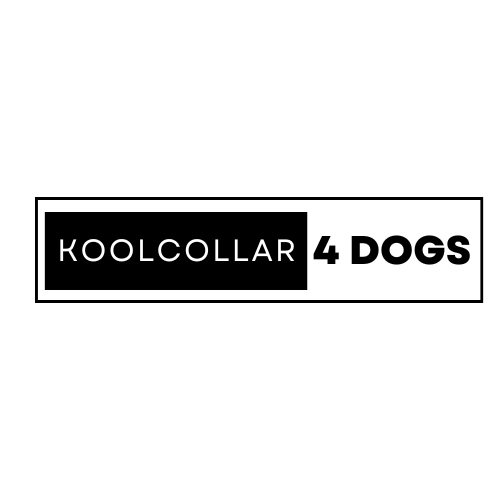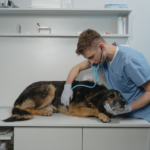Introduction to the life stages of dogs
As a devoted dog owner, I’ve come to realize that understanding the various dog life stages of our canine companions is crucial for providing them with the best possible care and support. Just like humans, dogs go through distinct phases of development, each with its own unique challenges and requirements. From the adorable puppy stage to the golden years of senior-hood, our furry friends embark on a remarkable journey that demands our attention and nurturing.
In this comprehensive guide, we will explore the different stages of a dog’s life, shedding light on the physical, emotional, and behavioral changes they undergo. Whether you’re a first-time pet owner or a seasoned dog enthusiast, this article will equip you with the knowledge and insights to navigate your dog’s life cycle seamlessly, ensuring their well-being and happiness every step of the way.
Puppyhood: The early months of a dog’s life
The puppy stage is arguably the most delightful and captivating phase of a dog’s life cycle. These tiny bundles of energy and curiosity are a constant source of joy and laughter, but they also require unwavering patience and guidance. During this critical period, which typically spans from birth to around six months of age, puppies undergo rapid physical and mental development.
As a responsible owner, it’s essential to provide your puppy with a nurturing environment that fosters their growth and socialization. This includes:
- Proper nutrition: Feeding a high-quality, puppy-specific diet is crucial for supporting their rapid growth and development.
- Socialization: Exposing your puppy to various sights, sounds, and experiences in a positive manner helps shape their behavior and confidence.
- Training: Establishing basic obedience commands and house training from an early age lays the foundation for a well-behaved and well-adjusted companion.
During this stage, puppies require frequent veterinary checkups to ensure they receive appropriate vaccinations, deworming, and preventative care. It’s also important to provide ample opportunities for exercise, playtime, and mental stimulation to channel their boundless energy and prevent destructive behaviors.
Also Read Dog Health Insurance
Adolescence: The teenage phase of a dog’s development
Just like human teenagers, dogs go through an adolescent phase that can be both challenging and rewarding. This period typically begins around six months of age and can last until the dog reaches sexual maturity, usually between 12 to 24 months, depending on the breed and size.
During adolescence, dogs may exhibit behaviors such as:
- Testing boundaries and pushing limits
- Increased energy levels and restlessness
- Difficulty focusing or paying attention
- Hormonal changes and potential aggression
As an owner, it’s crucial to remain patient and consistent during this phase. Continuing with obedience training and providing ample physical and mental exercise can help channel their energy in positive ways. Additionally, it’s important to monitor their diet and adjust it as needed to support their changing nutritional requirements.
Adulthood: The prime years of a dog’s life
Once your furry companion has successfully navigated the puppy to adult dog stages, they enter the prime years of adulthood. This period typically spans from around 2 to 7 years of age, depending on the breed and size of the dog.
During the adult stage, dogs are generally more settled, well-behaved, and receptive to training. However, it’s important to maintain a consistent routine and continue providing them with physical and mental stimulation to prevent boredom and potential behavioral issues.
Some key considerations during this stage include:
- Maintaining a balanced diet and appropriate weight
- Regular exercise and playtime to keep them physically fit
- Ongoing training and mental stimulation to prevent boredom
- Regular veterinary checkups and preventive health measures
By prioritizing your dog’s overall well-being during adulthood, you can ensure they remain healthy, happy, and well-adjusted companions for years to come.
Senior years: Understanding the needs of older dogs
As our beloved canine friends enter their senior years, typically around 7 to 10 years of age (or earlier for larger breeds), their needs and requirements begin to change. This senior stage of life can bring unique challenges, but with the right care and attention, our senior dogs can enjoy a comfortable and fulfilling twilight.
Some common age-related changes to expect during this stage include:
- Decreased energy levels and mobility
- Potential cognitive decline or confusion
- Increased risk of age-related health issues (e.g., arthritis, vision or hearing loss, organ dysfunction)
- Changes in appetite and nutritional requirements
As an owner, it’s essential to adapt your care routine to accommodate your senior dog’s evolving needs. This may involve:
- Providing a comfortable and supportive sleeping area
- Adjusting their diet to meet their changing nutritional requirements
- Implementing gentle exercise routines to maintain mobility and prevent muscle atrophy
- Monitoring for signs of discomfort or pain and addressing them promptly
- Increasing the frequency of veterinary checkups and preventative care
By being attentive and proactive, you can help your senior dog age gracefully and enjoy their golden years with dignity and comfort.
Common health issues in different life stages
Throughout a dog’s life stages, they may be susceptible to various health issues specific to their age and stage of development. Being aware of these potential concerns can help you take preventative measures and seek prompt veterinary care when needed.
- Puppyhood:
- Parasitic infections (e.g., worms, fleas, ticks)
- Congenital disorders or birth defects
- Nutritional deficiencies or imbalances
- Adolescence:
- Orthopedic issues (e.g., hip or elbow dysplasia)
- Skin conditions (e.g., allergies, hot spots)
- Behavioral problems (e.g., destructive chewing, separation anxiety)
- Adulthood:
- Dental issues (e.g., periodontal disease)
- Obesity and related health problems
- Injuries or accidents
- Senior years:
- Arthritis and joint issues
- Cognitive decline or dementia
- Organ dysfunction (e.g., kidney or liver disease)
- Cancer or tumors
Regular veterinary checkups and preventative care can help detect and address these issues early on, ensuring your dog’s overall health and well-being throughout their lifespan.
Feeding and nutrition for each life stage
Proper nutrition is essential for supporting your dog’s growth, development, and overall health at every stage of their life. Different dog age stages have varying nutritional requirements, and it’s crucial to provide a balanced diet tailored to your dog’s specific needs.
- Puppyhood:
- High-quality puppy food rich in protein, calcium, and essential nutrients
- Frequent, smaller meals to support rapid growth and development
- Adolescence:
- Gradual transition to an adult dog food formula
- Portion control to prevent obesity and maintain a healthy weight
- Adulthood:
- Balanced adult dog food formulated for their breed, size, and activity level
- Appropriate calorie intake to maintain an ideal body condition
- Senior years:
- Senior or senior-plus dog food with higher protein and fiber content
- Easily digestible and palatable ingredients to accommodate changing appetites
It’s also important to monitor your dog’s body condition and adjust their feeding schedule accordingly. Consult with your veterinarian for personalized nutritional recommendations based on your dog’s age, breed, and individual needs.
Training and socialization for dogs at different stages
Training and socialization are crucial components of a dog’s overall well-being and development. By providing appropriate training and socialization opportunities at each dog age stage, you can help your furry friend become a well-adjusted, confident, and obedient companion.
- Puppyhood:
- Begin basic obedience training (e.g., sit, stay, come)
- Introduce socialization with people, other dogs, and new environments
- Positive reinforcement techniques and reward-based training
- Adolescence:
- Reinforce obedience training and address any behavioral issues
- Continue socialization and exposure to new experiences
- Patience and consistency are key during this challenging phase
- Adulthood:
- Advanced obedience training or specialized training (e.g., agility, therapy work)
- Ongoing socialization and mental stimulation
- Reinforce desired behaviors through positive reinforcement
- Senior years:
- Adapt training methods to accommodate potential cognitive or physical limitations
- Provide mental stimulation through puzzle toys or gentle training exercises
- Patience and understanding as your senior dog may learn at a slower pace
Remember, training and socialization are ongoing processes that should be tailored to your dog’s individual needs and abilities at each stage of their life.
Exercise and activity requirements based on life stages
Physical activity and exercise are essential for maintaining your dog’s overall health, fitness, and mental well-being. However, the type and intensity of exercise should be adjusted based on your dog’s age and life stage.
- Puppyhood:
- Short, frequent play sessions and gentle walks
- Avoid strenuous exercise that can damage developing joints and muscles
- Provide plenty of opportunities for free play and exploration
- Adolescence:
- Gradually increase exercise duration and intensity
- Incorporate activities that challenge both physical and mental abilities
- Monitor for signs of fatigue or discomfort
- Adulthood:
- Regular, moderate exercise tailored to your dog’s breed and energy level
- Incorporate activities like hiking, running, swimming, or agility training
- Maintain a balance between physical and mental stimulation
- Senior years:
- Lower-impact activities like leisurely walks or swimming
- Adapt exercise routines to accommodate any physical limitations
- Provide mental stimulation through food puzzles or nose work
Remember, every dog is unique, and their exercise requirements may vary based on breed, size, and individual factors. Consult with your veterinarian to develop an appropriate exercise plan for your furry companion at each stage of their life.
Creating a comfortable and safe environment for your dog at each stage
Providing a comfortable and safe living environment is essential for your dog’s well-being and happiness throughout their life stages. By adapting their surroundings to their evolving needs, you can ensure they feel secure, content, and comfortable at every phase.
- Puppyhood:
- Puppy-proof your home by removing potential hazards and providing safe spaces for exploration
- Establish a designated potty area and consistent potty training routine
- Provide appropriate chew toys and enrichment activities to prevent destructive behavior
- Adolescence:
- Ensure your dog has ample space for physical activity and playtime
- Provide appropriate outlets for their energy, such as interactive toys or puzzle feeders
- Create a designated space for rest and relaxation
- Adulthood:
- Maintain a consistent routine and familiar environment
- Provide comfortable bedding and access to quiet spaces for rest
- Ensure your dog has access to fresh water and appropriate shelter when outdoors
- Senior years:
- Adapt your home to accommodate any mobility or sensory limitations (e.g., ramps, non-slip surfaces)
- Provide easily accessible food and water bowls, as well as comfortable bedding
- Create a warm, quiet, and low-stress environment for rest and relaxation
By creating a safe and comfortable living space tailored to your dog’s specific needs at each life stage, you can promote their overall well-being and ensure they feel secure and content in their surroundings.
Importance of regular veterinary check-ups
Regular veterinary checkups are essential for maintaining your dog’s health and well-being throughout their dog life stages. These visits provide an opportunity for your veterinarian to monitor your dog’s growth, development, and overall condition, as well as address any potential health concerns promptly.
- Puppyhood:
- Follow the recommended vaccination schedule and deworming protocols
- Monitor growth and development, addressing any potential issues early on
- Discuss preventative care measures, such as flea and tick control
- Adolescence:
- Address any behavioral or training challenges
- Monitor for potential orthopedic issues or developmental concerns
- Discuss spaying or neutering options and timing
- Adulthood:
- Routine checkups and preventative care (e.g., dental care, heartworm prevention)
- Monitoring for early signs of age-related health issues
- Discuss dietary and exercise recommendations
- Senior years:
- Increased frequency of checkups to monitor for age-related conditions
- Diagnostic testing (e.g., bloodwork, X-rays) to assess organ function and overall health
- Discuss pain management and quality of life considerations
By establishing a strong relationship with your veterinarian and adhering to a regular checkup schedule, you can ensure your dog receives prompt and appropriate care at every stage of their life, promoting their overall health and longevity.
Conclusion: Embracing and enjoying every stage of your dog’s life
As we navigate the different dog life stages of our beloved canine companions, it’s important to embrace and cherish each phase with patience, understanding, and unconditional love. From the boundless energy of puppyhood to the wisdom and grace of the senior years, every stage presents its own unique joys and challenges.
By being attuned to your dog’s evolving needs and providing them with the appropriate care, nutrition, training, and environment, you can ensure they thrive and live their best life at every age. Remember, our furry friends rely on us to be their advocates and guardians, and it’s our responsibility to guide them through their journey with compassion and dedication.
Embrace the journey, celebrate the milestones, and cherish the precious moments you share with your canine companion. After all, their love and loyalty are unconditional, and their companionship is a gift that transcends all dog stages.
At [Company Name], we understand the importance of providing your furry family members with the best care possible. Our team of experienced veterinarians and pet care professionals is dedicated to supporting you and your dog through every stage of life. Whether you need guidance on nutrition, training, or specialized care, we’re here to help. Schedule an appointment today and embark on a journey of lifelong wellness for your beloved companion.





